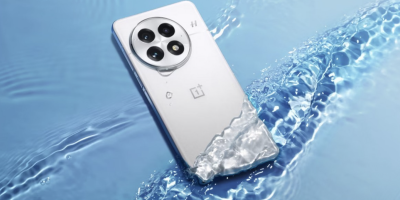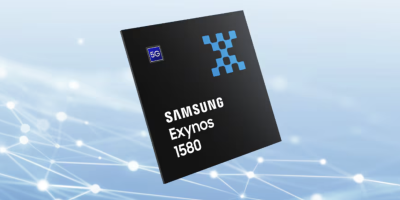During the company’s Q1 earnings call, Intel CEO Paul Ottelini revealed that the first smartphone to utilize an Atom-based Medfield CPU would ship later this week. He wasn’t too clear on which device that may be, but there are only a handful of possibilities. The Lenovo K800 was the first handset announced with Intel’s platform and we also have the Orange Satna Clara and similar Lava Xolo X900 as options. All run on a 1.6GHz Atom Z2460 chip.
The announcement is a major milestone for Intel, a company that has been having a hard time breaking into the mobile space as previous attempts at creating a processor suitable for smartphones and tablets were not as space or power efficient as current components. Major device launches from Motorola and a continued partnership with Google give Intel a bright future with Android.
[via Electronista]












Why’s that phone upside down?
They’re in Australia.
http://29.media.tumblr.com/tumblr_lltzgnHi5F1qzib3wo1_400.jpg
rofl!
LMAO
What he is holding in the picture is a Lenovo but this might be just any picture….Lava Xolo looks sweet especially coming from a cheaper manufacturer in India.
Great its shipping…….where?!?
Why bother?
Intel’s architecture is cemented in desktop PC’s and is also a strong force in servers.
But why bother with it in mobile devices? It’s instruction set compatibility with PC’s and servers offers no real advantage when everything is compiled from source. (At least with open source.)
In fact, if an app uses native code for anything, then it is incompatible with any devices using Intel chips. Thus Intel enters this market at a disadvantage, where ARM chips are the strong entrenched player.
ARM doesn’t have the decades of legacy cruft present in Intel chips. Yes, a modern Intel chip could boot up DOS 1.0 in 16 bit mode with segment registers. Yuk.
I imagine they might have a strong market with the spec junkies group. The single core medfield is supposed to pretty much outperform ever dualcore out there besides the Snapdragon S4
I don’t think I could recommend being a guinea pig for that product.
I’m rooting for Intel – gotta respect a company that is still creating jobs in America!
I wonder when AMD is going to jump into the game. They would be strong competition for both Intel and nVidia.
Right. They first have to learn how to make CPU perform without a monstrous cooling systems.
Anyone knows how this chip stands against say a Tegra 3, S4 or Exynos 4412?
It’s difficult to compare architectures head-to-head. I think the best non-partisan attempt to compare ARM to x86 thus far has been Phoronix (link below). The OMAP4 is dual-core but the Atom is hyperthreaded. Also, Atom has undergone little architectural change from Silverthorne to Medfield, so this should be a pretty valid test. Despite a significant clockspeed advantage, the Atom has a difficult time keeping up with the ARM chip. We don’t have independently verified power numbers yet, however Intel and AMD traditionally have overestimated efficiency. The Atom is also rumored to be larger and significantly more expensive than an equivalent ARM design. I don’t think Intel has an answer to Krait and a15-based designs sampling right now. Medfield may have a niche in low power Windows 8 tablets though.
http://www.phoronix.com/scan.php?page=article&item=ubuntu_1204_armfeb&num=1
That performance review of that website makes no sense. It is comparing the 4 year old netbook atom platform (N270) to a brand new OMAP 4460. The newer atoms spank the old ones in performance tests at the same OR LOWER clock rates, and this includes the new smartphone atom platform (Z2460). If you want a better bench test, check out:
http://www.anandtech.com/show/5365/intels-medfield-atom-z2460-arrive-for-smartphones
And, in this test, the phone is running Gingerbread, which I mention because ICS is ~10-20% faster than GB, especially in browser tests where it is about 100% faster, so the intel should be about 10-20% faster once getting ICS, even though it already crushes everything else.
When you normalize for clockspeed though, the lead disappears. Remember the Razr is on GB also. The Atom architecture has gotten more energy efficient across generations, but has not gained appreciable IPC. One or two benchmarks doesn’t indicate a whole lot–Medfield was impressive in some of the Phoronix tests too, but overall the more test cases we look at, Medfield increasingly appears to be comparable to a Cortex-a9 from last year:
http://www.netbooknews.com/47681/intel-atom-medfield-z2460-antutu-benchmarks/
“When you normalize for clockspeed though, the lead disappears. ”
This comment makes no sense. Who cares what the clock speed is as long as it is a released platform at that speed.
“Remember the Razr is on GB also”
…and the Atom performed an average of 48% faster than the Razr in the browser tests.
“The Atom architecture has gotten more energy efficient across generations, but has not gained appreciable IPC.”
That’s like saying the S4 (snapdragon) is as fast as the S1 because they are all snapdragons. I don’t know where you get your information, but Intel (like qualcomm) has improved the Atom across the board (power efficiency, memory bandwidth, computing efficiency (Instructions Per Clock), etc. etc) just as it has with its other platforms.
“One or two benchmarks doesn’t indicate a whole lot”
It’s all we have to go on so far. Plus, it’s a real world test and since it’s running exactly the same software, yes… yes it does indicate a whole lot at the moment.
“Medfield was impressive in some of the Phoronix tests too, but overall the more test cases we look at, Medfield increasingly appears to be comparable to a Cortex-a9 from last year”
That is not true because the Phronix tests were testing 4 year old x86 tech (NOT THE MEDFIELD PLATFORM, THE N270 IS THE DIAMONDVILLE PLATFORM) against the latest arm and still finding arm barely able to keep up against the slowest x86 processor made 4 years ago.
As for the link, if you’d have read the information they state in the post, the writer mentions that the test isn’t really fair because it tests 2D and 3D graphics which as we’ve seen from other benchmarks, the Atom platform has issues running because of compatibility, probably mainly due to much of the graphics intensive benches are written in C/C++ and compiled for arm.
As for xBruce77x’s initial post, CPU-wise, the Atom will probably crush all of those platforms AT THE MOMENT with gains of over 30%. GPU-wise, the Atom utilizes the PowerVR SGX540 which is the same GPU as in the Galaxy nexus and Moto Razr except the Atom runs it at 400mhz instead of 300mhz so expect at maximum 25 – 33% performance increase there.
My last post on this subject.